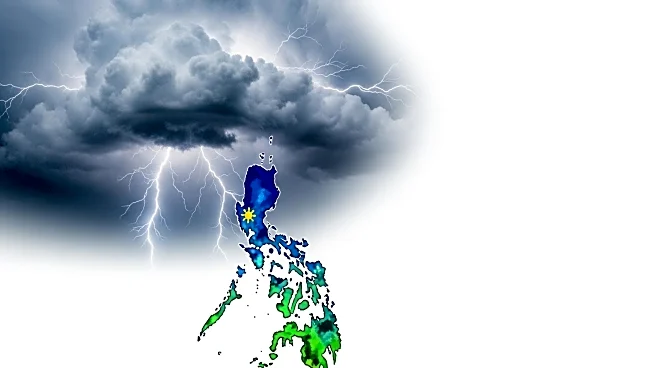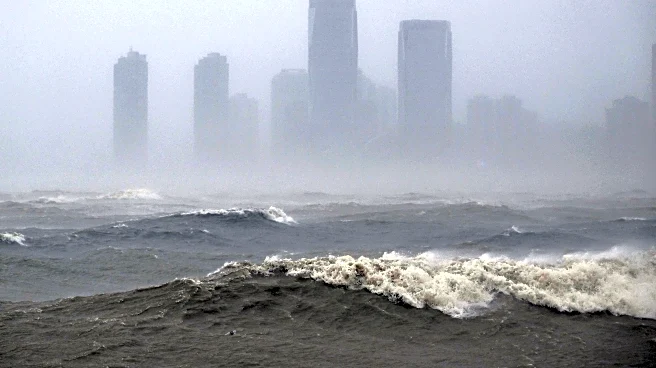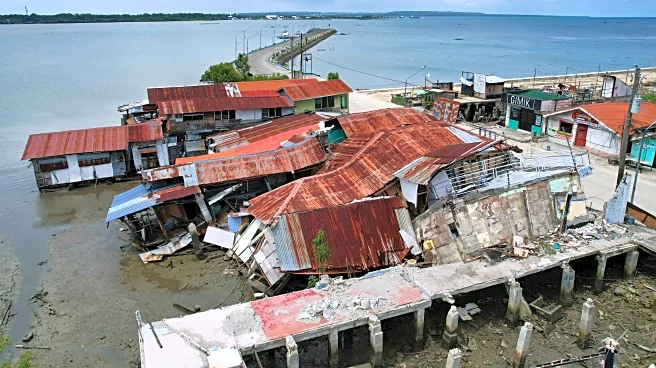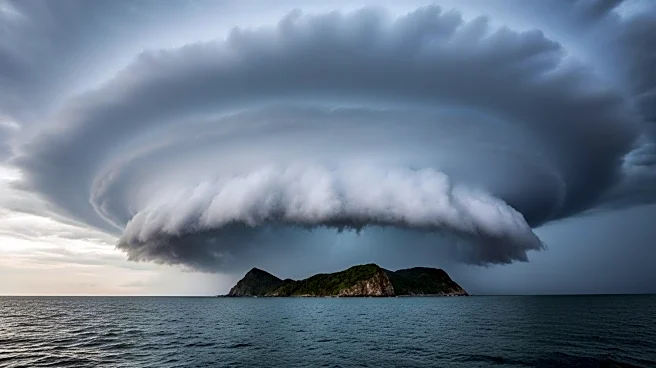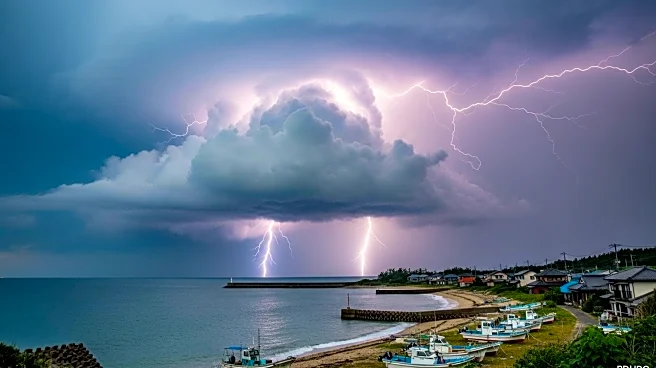What is the story about?
What's Happening?
Typhoon Matmo has weakened into a storm after crossing the mountainous northern region of the Philippines, where it prompted the evacuation of thousands of residents. The storm, which initially made landfall in Isabela province, brought sustained winds of up to 110 kilometers per hour and gusts reaching 165 kilometers per hour. Despite its weakening, the storm remains dangerous, with potential tidal surges and heavy rainfall expected. The Philippines, a nation frequently affected by natural disasters, is currently dealing with the aftermath of a deadly earthquake and two recent storms. The typhoon is expected to move towards southern China, potentially regaining strength.
Why It's Important?
The impact of Typhoon Matmo highlights the vulnerability of the Philippines to natural disasters, which can have significant social and economic consequences. The evacuation of thousands of residents and the disruption of daily activities, such as school closures and restrictions on sea travel, underscore the challenges faced by the country in disaster management. The potential strengthening of the storm as it moves towards China could affect international relations and disaster response coordination between the affected countries. The ongoing recovery efforts from previous disasters further strain resources and highlight the need for robust infrastructure and emergency preparedness.
What's Next?
As Typhoon Matmo moves towards southern China, authorities in the region are likely to prepare for potential impacts, including evacuations and emergency measures. The Philippines will continue to focus on recovery efforts from the recent earthquake and storms, with the Red Cross assisting in setting up temporary shelters for displaced residents. Monitoring of the storm's path and intensity will be crucial for both the Philippines and China to mitigate further damage and ensure public safety. International aid and cooperation may be necessary to support affected communities and enhance disaster resilience.
Beyond the Headlines
The frequent occurrence of natural disasters in the Philippines raises questions about climate change and its role in intensifying weather patterns. The country's position on the Pacific 'Ring of Fire' makes it particularly susceptible to seismic and meteorological events, necessitating ongoing investment in disaster risk reduction and climate adaptation strategies. The social impact of repeated evacuations and infrastructure damage can lead to long-term economic challenges, affecting livelihoods and development. The situation also highlights the importance of international collaboration in addressing global climate issues and supporting vulnerable nations.
AI Generated Content
Do you find this article useful?
